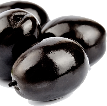







How strong is your flour?

 3099 x views
3099 x views
1. The fermentation and proofing
2. The strength of the flour you use
The rise time of your dough is closely related to what pizza bakers call the "strength" or "strength" of their flour. Bread bakers call this the "baking value." Wheat generally has a good baking value. This means that the air formed during the rise is well retained in the dough. This also requires sufficient high-quality protein (gluten) in the dough. Rye, for example, has a low baking value and is therefore not very strong. If you were to make pizza dough with only rye flour, your dough wouldn't rise enough.
A good rule of thumb is to make pizza dough with a medium-strength or strong flour. With these types, you can meet rising times of 8 hours or longer. This long rising time results in a more flavorful and easily digestible dough. Weak flours can't withstand such long rising times. Dough made with a weak flour is literally less strong than dough made with a stronger flour. That's why pizza makers avoid weak types unless they're in a real hurry.
We can hear you thinking: Great, Stefan and Elkin, that I know this now... but what exactly is medium-strength or strong? And how do I know how strong a particular type of flour is? Does it say so on the packaging? All valid questions that we'll answer using the letter W.
Value W
The strength of a flour type is expressed with the letter W followed by a number, usually somewhere between 90 and 410.
W + number together form the W-value.
So: W150, W200, W280, or W300. The W-value is sometimes also listed as a double number because it has a bandwidth: W200/220 or W260/280. It doesn't matter much whether you see a single or double number; the principle is the same in all cases. Namely: the higher the W, the stronger the flour. And the stronger the flour, the longer the rise time.
If you know the W-value of a flour type, you automatically have an indication of the correct rise time. And that's what makes the W so valuable in our opinion. Because a common mistake novice pizza makers make is combining the flour used with the wrong rise time. The W-value immediately puts you on the right track for ripening times, because all flour types in the world can be classified as follows:
“ If you know the W-value of a type of flour, you automatically have an indication of the fermentation.”
Weak flours
W90 to W170
- Weak flour develops a weak gluten network, making the dough rise faster.
- Average protein content of 9% to 12%.
- Especially suitable for cookies, waffles, and confectionery that don't require a strong gluten network.
- Suitable for short rest and rise times: approximately 2 to 6 hours at ambient temperature or a maximum of approximately 12 hours in the refrigerator.
- Weak flour absorbs approximately 50% of its own weight in water. This means that for every kilogram of flour, you can add about 500 grams of water.
- Wheat flour from the supermarket is usually weak (approximately W150).
Medium strong flours
W180 to W280
- Produces a much stronger gluten network than weak flour.
- Average protein content of 12% to 12.5%, containing proteins with good gluten-forming properties.
- Suitable for pizza dough, bread dough, and fresh pasta dough. And for making starters.
- Suitable for longer resting and rising times: at least 8 to 24 hours at ambient temperature or approximately 24 to 48 hours in the refrigerator.
- Absorbs approximately 55% to 65% of its own weight in water (= 550 to 650 grams of water per kilogram of flour). The higher the W, the more water you can usually add.
- The favorite flour of many Neapolitan pizza makers.
Strong flours
W300 tot W410
- Creates a strong gluten network. Therefore, it rises more slowly.
- High protein content of 13% to 14% with good gluten-forming properties.
- Suitable for pizza dough, bread dough, brioche, ciabatta, and fresh pasta. And for making starters.
- Suitable for long rising times: a minimum of 10-12 hours and a maximum of 36 hours at ambient temperature or approximately 2 to 4 days in the refrigerator.
- Strong flour can absorb 65% to approximately 80% of its own weight in water (= 650 to 800 grams of water per kilogram of flour) and is therefore suitable for dough with high hydration.
- Manitoba, with a W-value of 350 or higher, is the strongest flour available. Manitoba can absorb up to 100% of its own weight in water.
Scan the barcode and discover the W
You now know you need to look for the W-value. But where can you find it? Surprisingly, not all mills put the W-value on their packaging. It's actually the other way around: only a few mills do.
If you look carefully, you can usually find the W-value somewhere on the miller's website. A much easier solution is to download our Perfect Pizza Flours app.
With our app, you can quickly and easily scan the barcode of any package of flour. Our app then shows you the most important characteristics of your flour. You can see the W-value and the recommended rising times at a glance.




 0
0